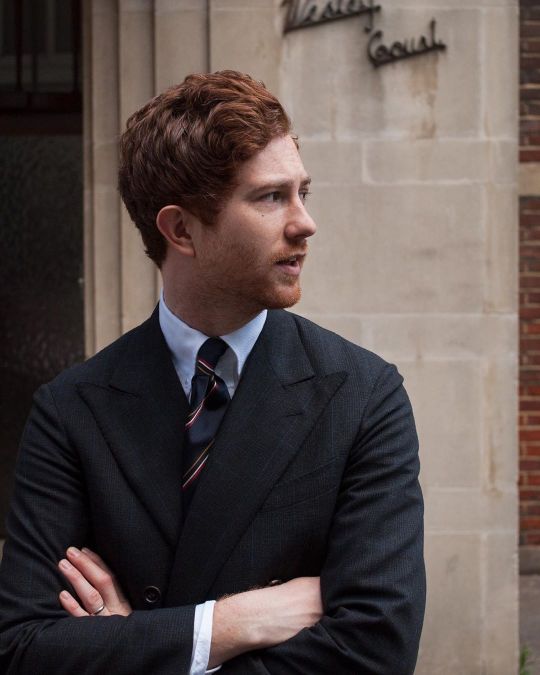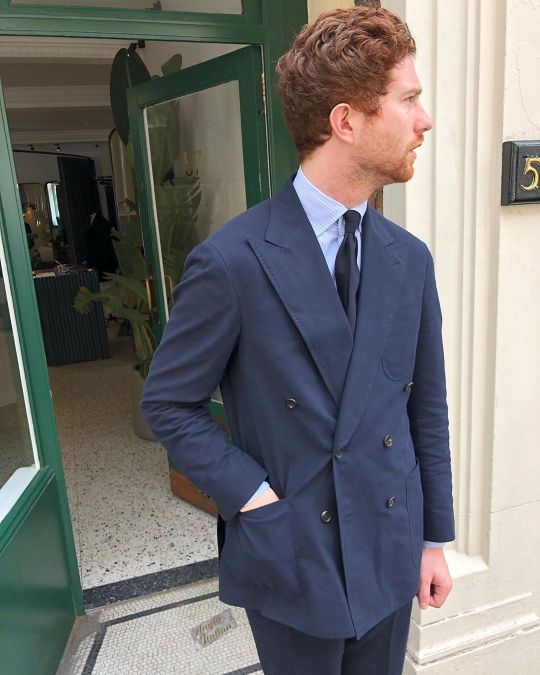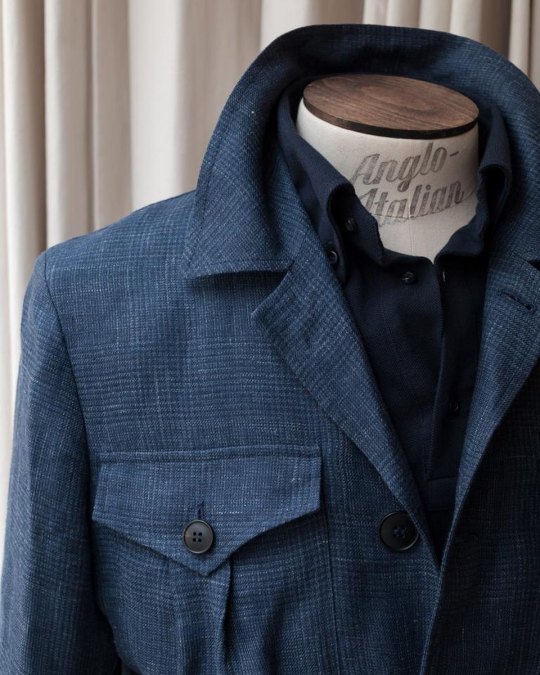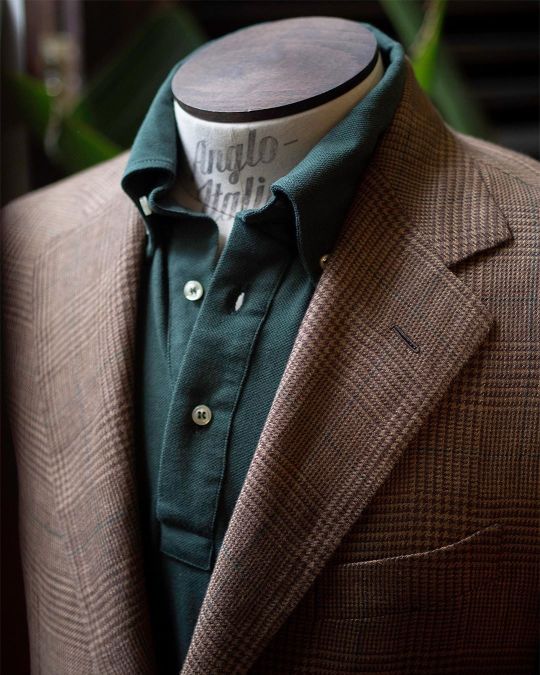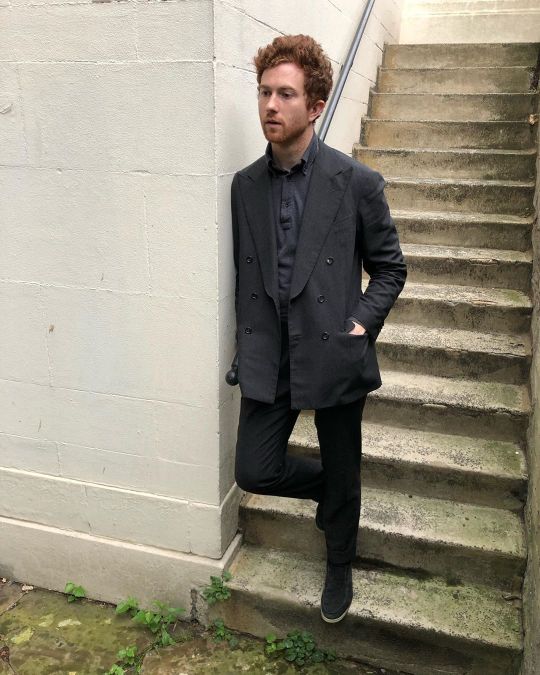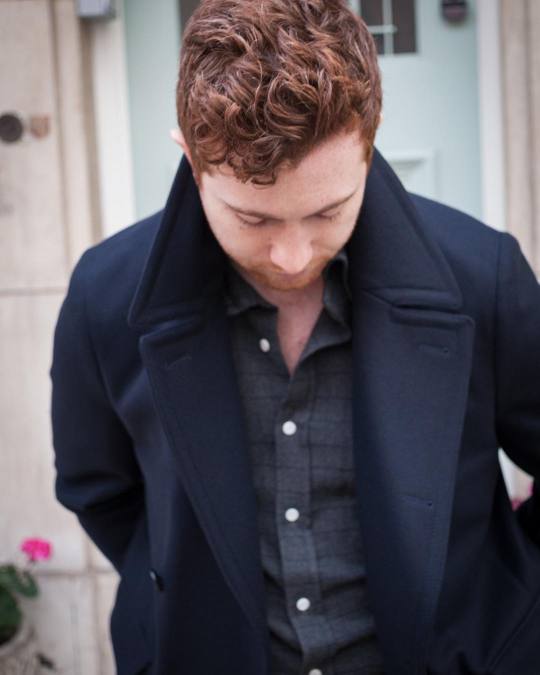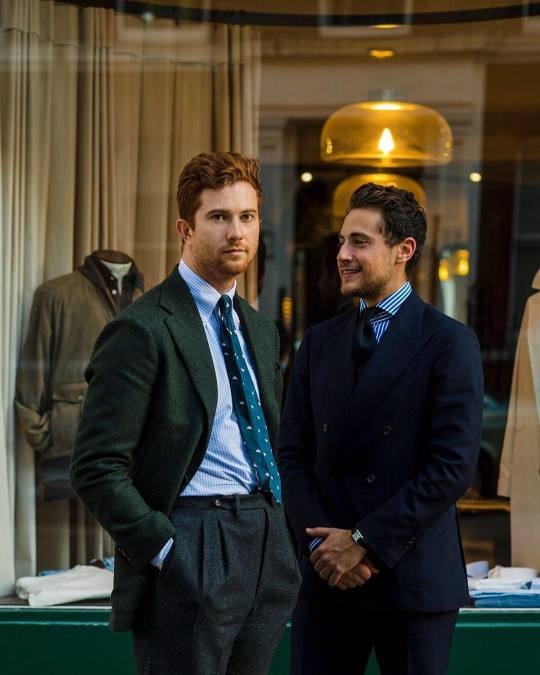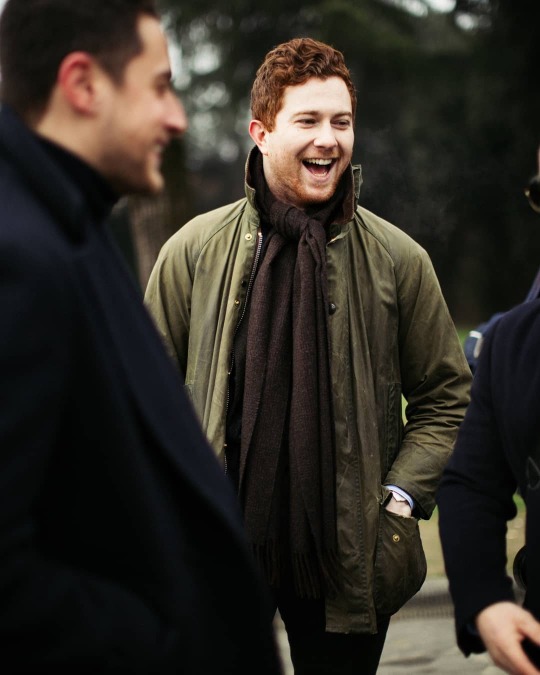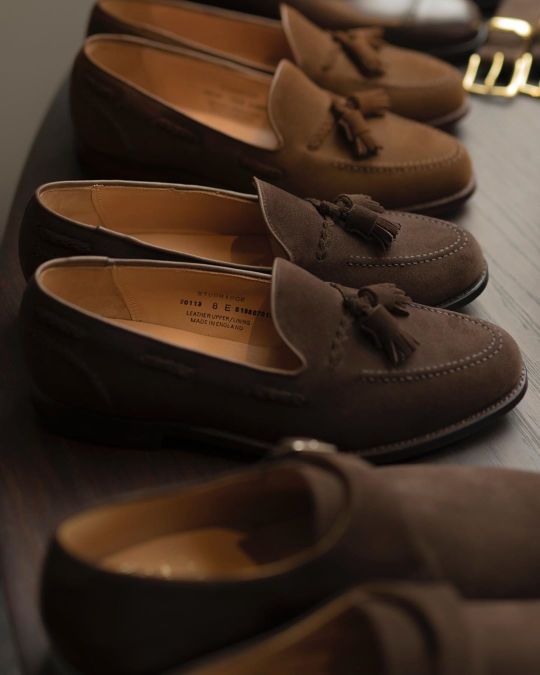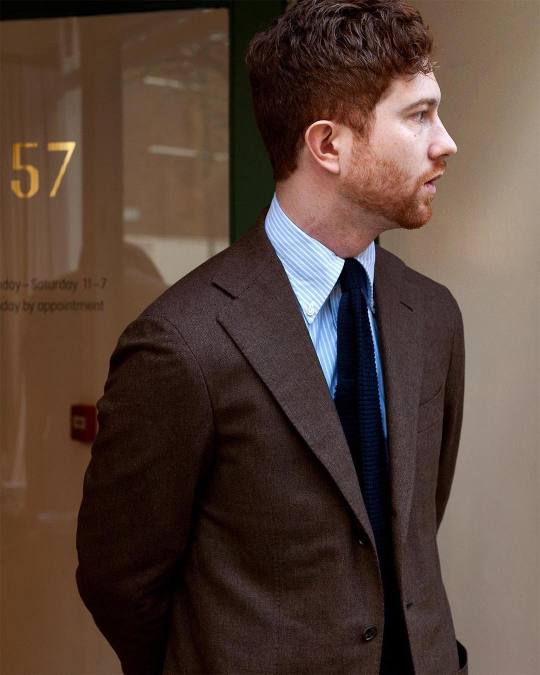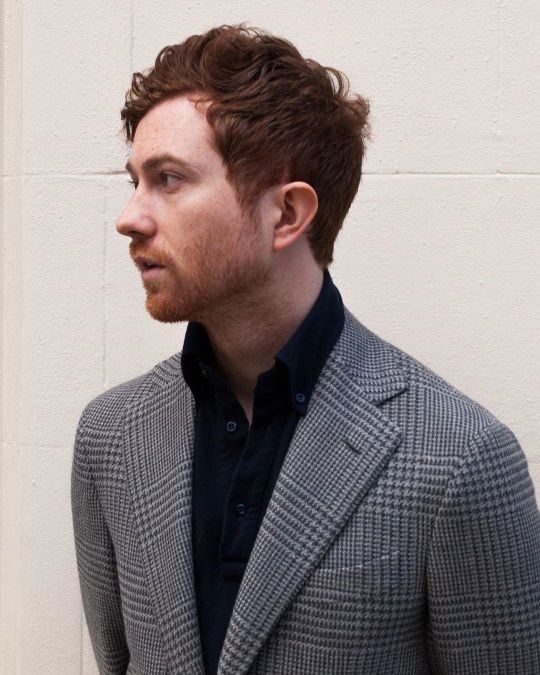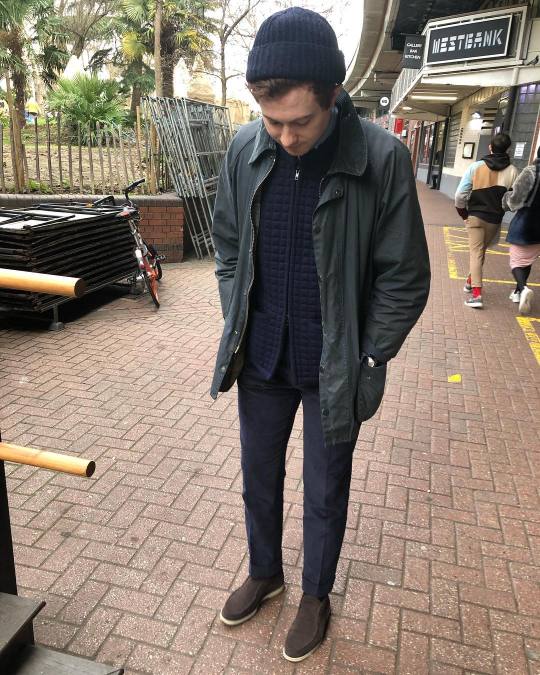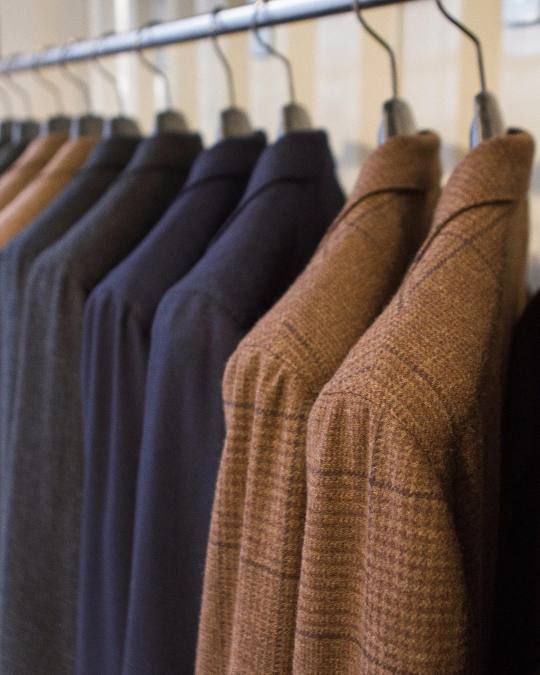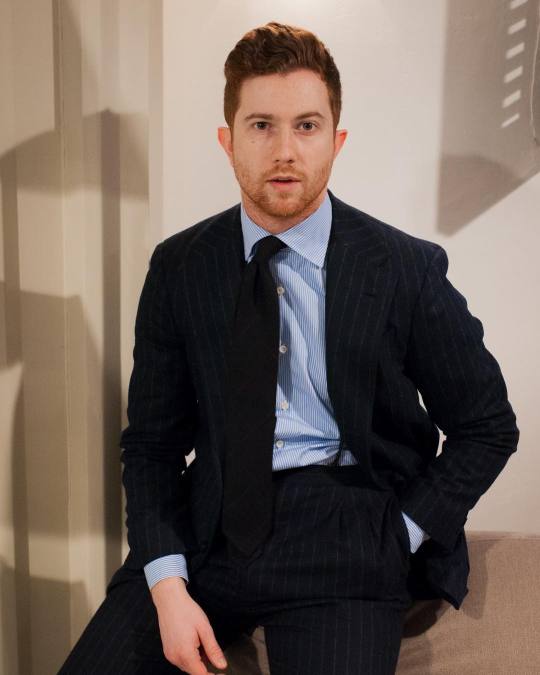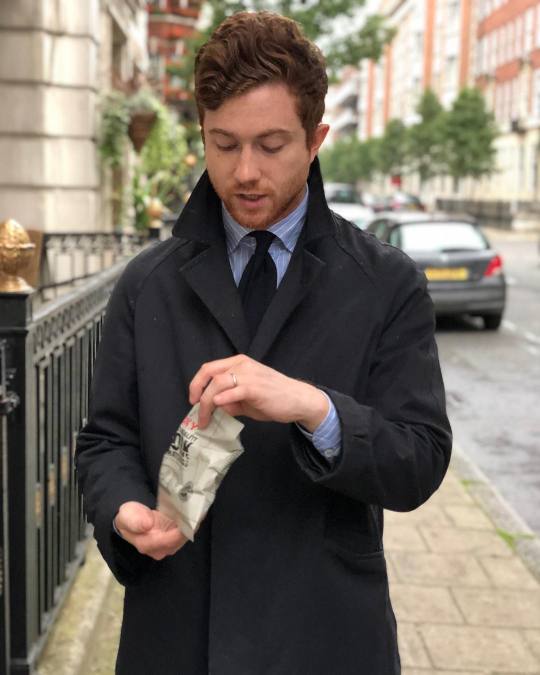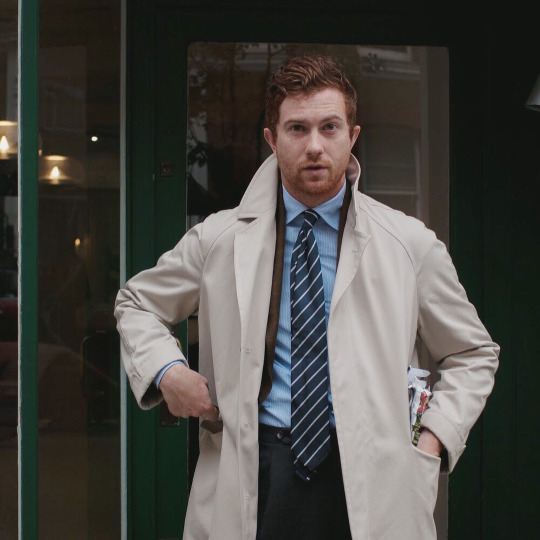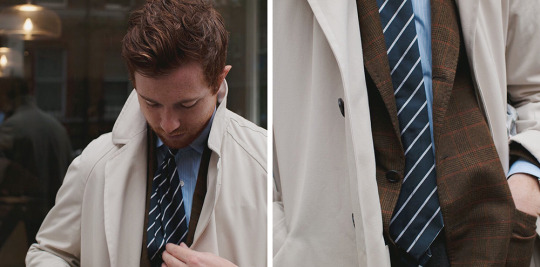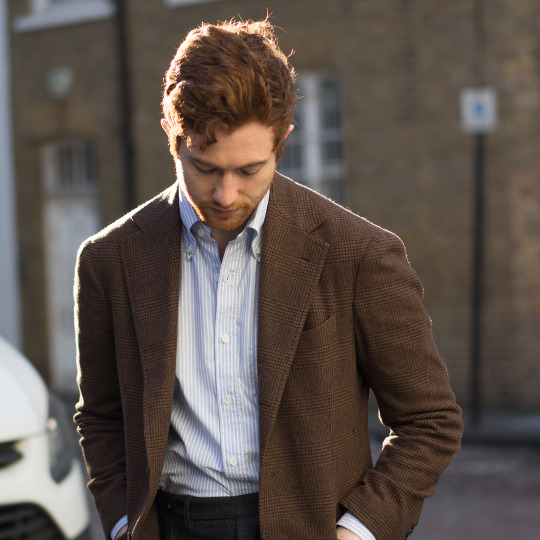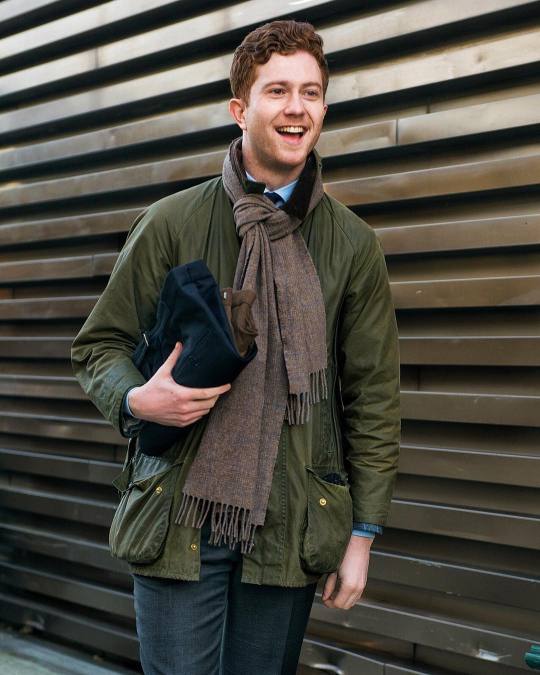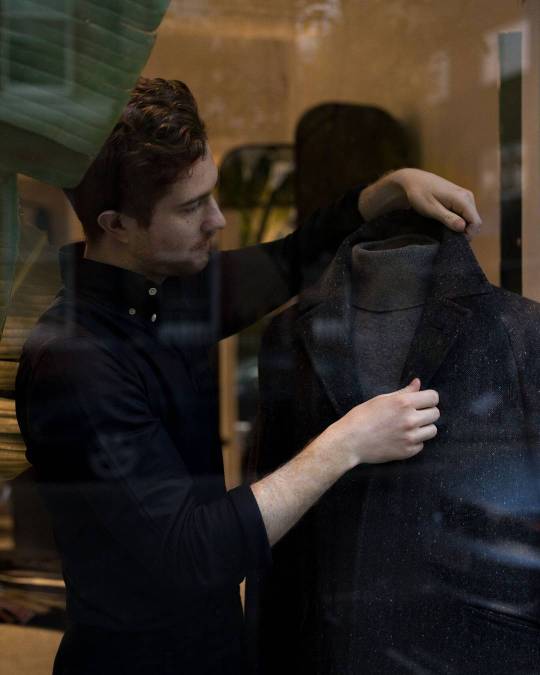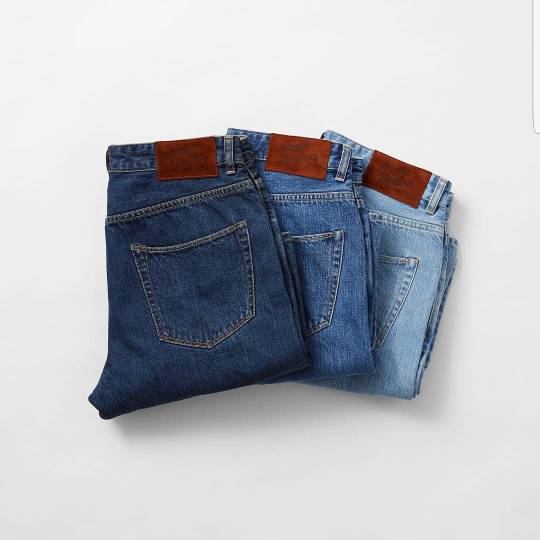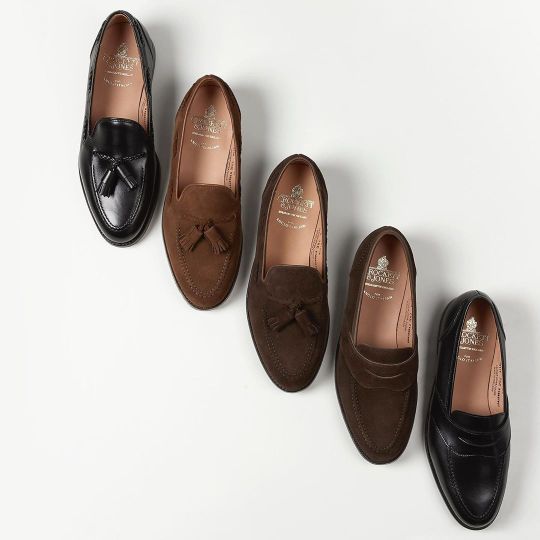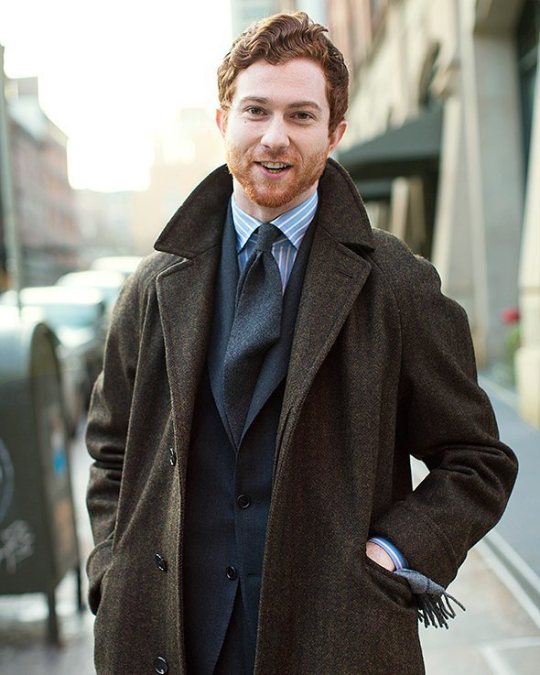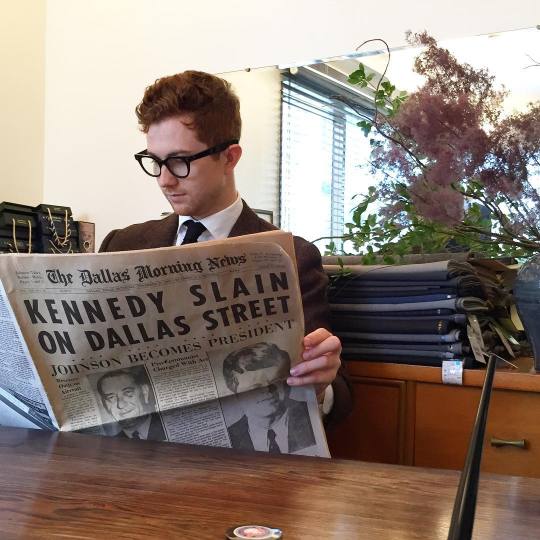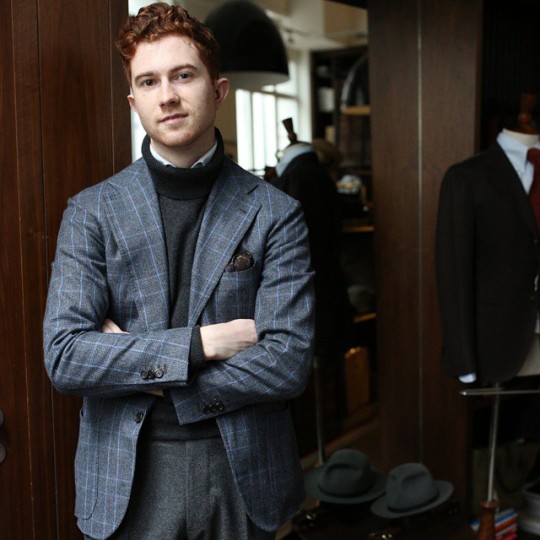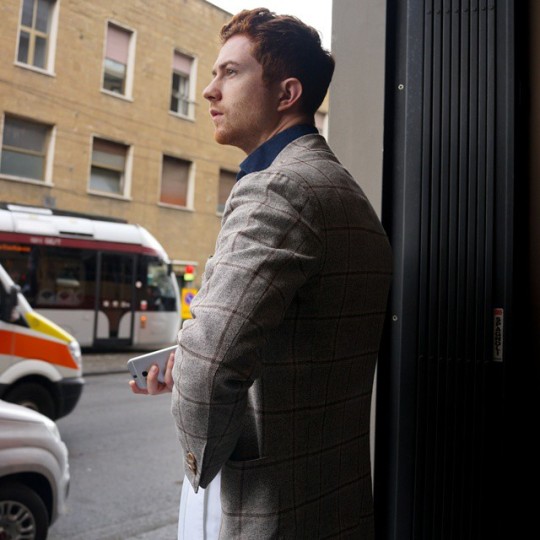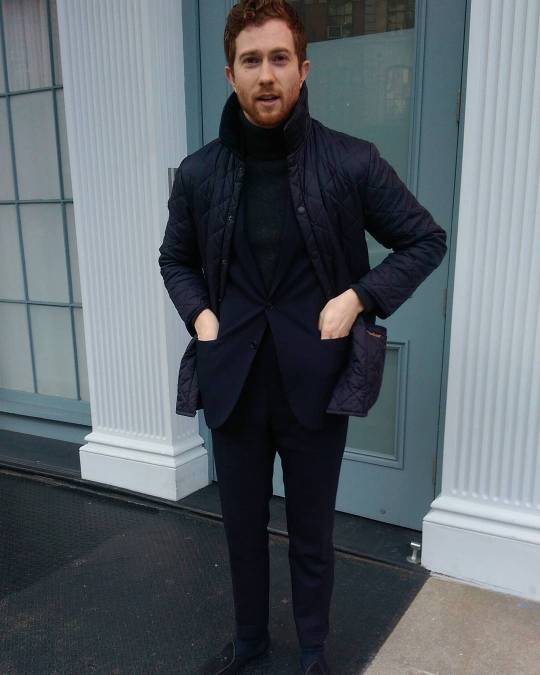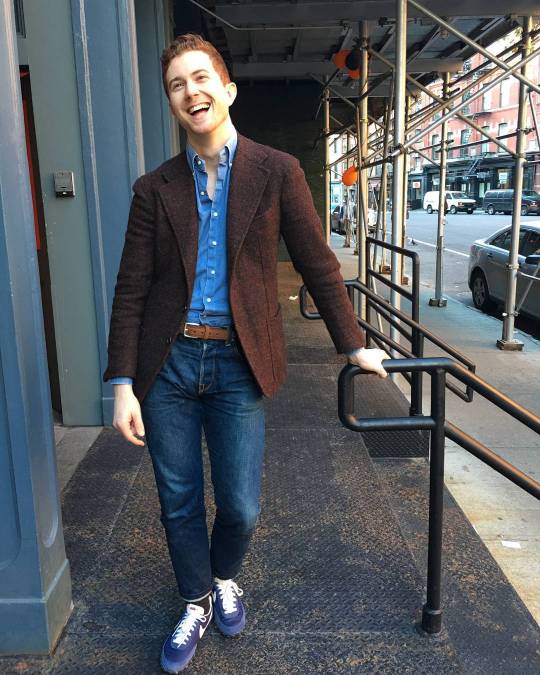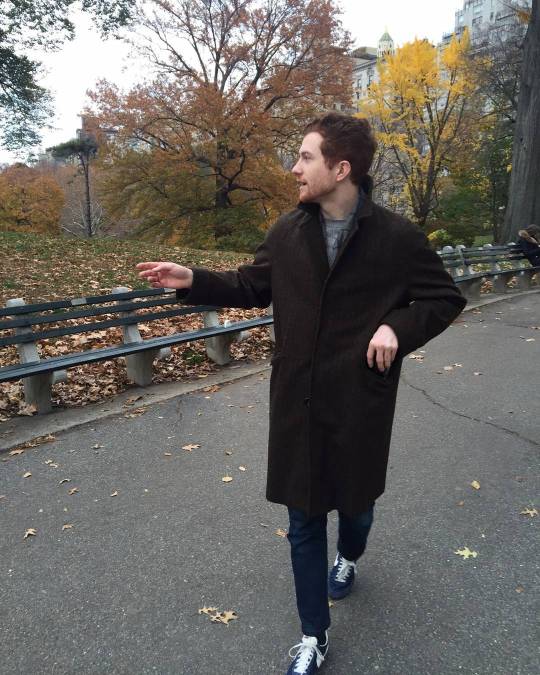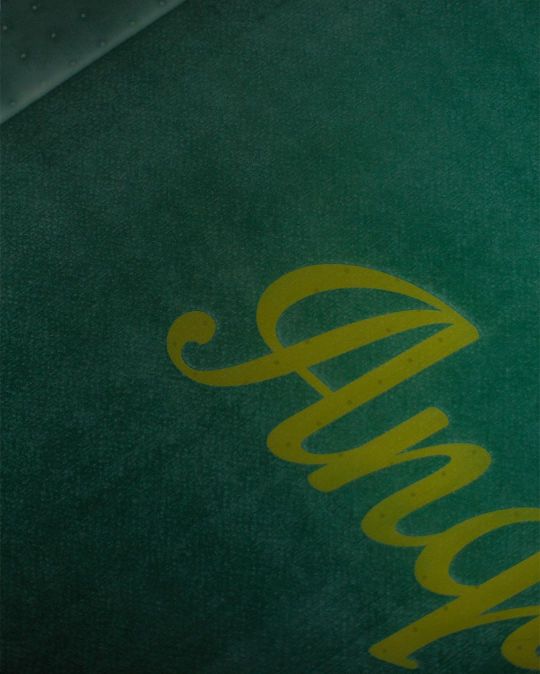
In 1968, Tommy Nutter was exasperated with his sales job at Donaldson, Williamson, and G. Ward, a bespoke tailoring firm based in London’s Burlington Arcade. Nutter derisively described their house style as “little” and wanted to update it with some flair. The traditional-minded tailors in the workroom, however, dismissed his ideas as technically impossible and, in any case, tasteless. “People did not come here to be measured up for tents,” one journalist documented. So Tommy petitioned for a new job at Henry Poole. When the firm’s managing director, Samuel Cundey, saw Tommy’s fashionably long hair, however, he sent him away, horrified.
Tommy would save his ideas for himself. Shortly after quitting his job, he and Edward Sexton went on to form one of the most important tailoring houses of the 20th century, Nutters of Savile Row. If you believe menswear lore, many of the long-standing firms, such as Huntsman, viewed Nutters at first with suspicion. Bespoke tailoring at the time was a hush-hush and stuffy business. Tailoring shops didn’t even have display windows and firms such as Anderson & Sheppard considered publicity vulgar. The expression “it’s not done” not only sums up the hard-edged attitude of many in the solvent class, but also the tailors who served them.
Nutters not only displayed their goods to the public, they also talked to journalists and attracted younger customers into the then-stodgy precincts of Savile Row. They tailored for Elton John, Mick Jagger, and The Beatles, as well as women such as Twiggy and Diana Ross. Men walked out of the Nutters shop clad in box plaid suits, flared pants, and mini-platform shoes. As they strutted down the street, competing tailors stared, mouths agape. Perhaps they were offended by the garish designs. Or maybe they feared Nutters made them look stodgy by comparison.
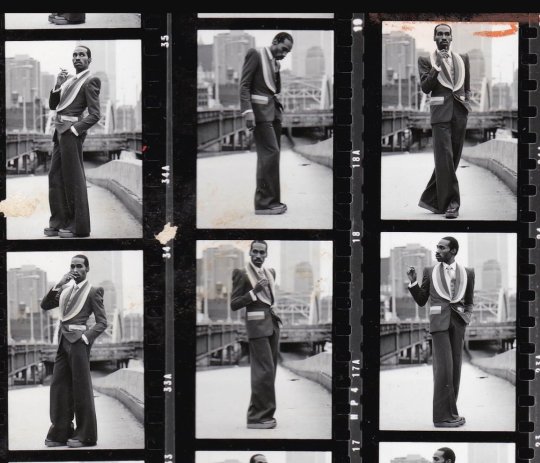
Angus Cundey, Samuel’s son, remembers things differently. In an issue of Men’s Wear, he’s quoted as saying: “I would like to see this stuffy image removed from the West End, but in doing so we should not forsake our reputation for quality. I want to show that Savile Row keeps up with the times.” Just three months after Nutters opened, the Cundey family threw a proverbial “brick through their own obscured frontage” and installed a shop window to attract passers-by. Lance Richardson offers an excellent account of Nutter’s history in his book, House of Nutters.
Indeed, the Row turned out to be mostly on Tommy’s side. Any skepticism he did experience came predominately from outside — from the media, for instance, which was still pushing (and would continue to push, for decades to come) the idea of the industry in irreversible decline. […] Tommy didn’t quite fit into this reductive narrative, so he was condescendingly dismissed, just one of the new “clothes artists” whose shops stood out mostly as “bright parodies of the old style — a sort of Space-Age Regency,” as though the future had no business mingling with a consecrated past.
Since Nutters, tailoring has been reinvented a hundred times over. But at each of these iterations — Armani’s zoot-suit silhouette, Versace’s flashy riposte to Armani’s usual restraint, and Helmut Lang’s austere high-fashion tailoring — the clothes eventually look absurd once the fog of fashion lifts. Consequently, many men have retreated to classic tailoring for fear of looking bad in hindsight.
I think there’s a middle road. There’s nothing wrong with referencing 1930s Apparel Arts catalogs and the heydays of Ivy Style for inspiration. But if you’re looking for a modern take on classic tailoring, stores such as The Armoury, Drake’s, and BRIO are doing a great job of balancing the two poles. These names won’t sound new to anyone who’s been reading men’s style blogs for a while now. But it’s worth noting that their Italian inspired cuts are rooted in tradition while also looking, well, cool and sexy. Brooks Brothers is many things, but it is neither cool nor sexy.
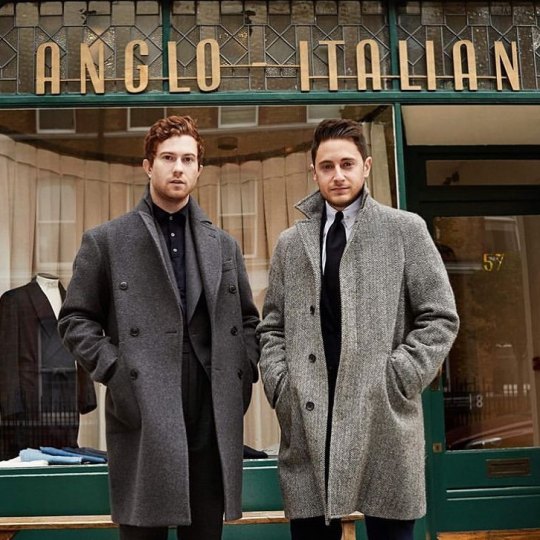
Anglo Italian, a relatively new shop located in London’s Marylebone, is one of those places that’s helping bring a new generation of people into classic tailoring. One of the shop’s co-founders, Jake Grantham, has become a minor internet celebrity, although he’s somewhat media-shy. He doesn’t give many interviews and generally shuns promotion. But he and his business partner Alex Pirounis have a sizable following on Instagram because thousands of young men look to them for style inspiration.
“With classic tailoring, there’s a real risk of looking pastiche,” says Jake. “As a younger guy in my 30s, I need to be able to wear clothes to parties and the pub. I have to be able to do things that guys at my age do. I feel strongly that I shouldn’t walk out of the shop looking like I’ve stepped out of the past. I realize it’s a fine line, but at Anglo Italian, we try to balance classic style with relevance.”
Jake has been wearing tailored clothing for much of his life. As a student at King’s College in Wimbledon, he was required to wear a suit at age 16 as part of the school’s uniform. Jake was eager about it, not least because he was also into old gangster films at the time, such as White Heat and Little Ceaser, where the characters all wore dark worsteds with revers. “When you’re 16, you’re looking to give off a certain kind of masculinity, maybe because you’re coming of age and don’t have that sensibility yet. So appearance can be very important to you,” he said.
With a love for tailoring, Jake decided to pursue a career in the trade at age 18. Initially, he did some odd jobs for various bespoke tailoring shops, cleaning up stockrooms and delivering bunches to coat makers. Two years later, he became a sales associate at the then newly opened Drake’s flagship in London. This was around the time Michael Drake, the firm’s founder, was handing the company’s reins over to Michael Hill, now co-owner and Creative Director. When he graduated college, Mark Cho asked if he’d like to move to Hong Kong to work at The Armoury.

“Those years were incredible,” Jake says fondly of his former employers. “Michael Drake was a huge influence on me. He was one of the first guys I saw wearing Italian sport coats with American button-downs and English flannel trousers. But he looked so much better than everyone else because his style was softer and more muted. I then spent five years at The Armoury at a time when the company was growing at a real pace, so there was a lot of opportunities. I was able to do a lot of the buying, development, and designing. I was able to go to Milano Unica, a tradeshow for cloth, which is where tailoring begins. If Drake’s was the beginning of my career in this trade, The Armoury allowed me to grow and put some ideas together.”
Jake says his style hasn’t changed that much since he was a teen, he’s just honed it. He grew up wearing waxed cotton Barbour jackets, oxford button-downs, and boat shoes, which he still stands by today. “Maybe things have gotten a little more drapey, but only because I’ve put on weight,” Jake jokes. He says he’s most comfortable in a navy hopsack sport coat, some grey Fresco trousers, a button-down oxford shirt, and a pair of suede loafers. From fall until spring, Jake often wears raglan-sleeve coats, such as Barbour’s field jackets. He also likes five-pocket jeans and prefers button-up shirts in light blue (“they hide dirt better,” he noted, “especially in reverse stripes”). For casual shoes, he stomps around on weekends in New Balance sneakers and Loro Piana’s Open Walks.
“Antonio Liverano taught me that a suit is a suit, and a jacket is a jacket,” Jake remarks. “A suit is something you can wear as a complete look. It’s made from a four-season cloth and comes in blue or grey. A jacket, on the other hand, is where the fun begins. So while I like four-season blazers, I also enjoy summer sport coats in materials such as open-weave linens and winter sport coats in tweed.” This coming fall/ winter, he’s looking forward to getting back into woolen flannel.
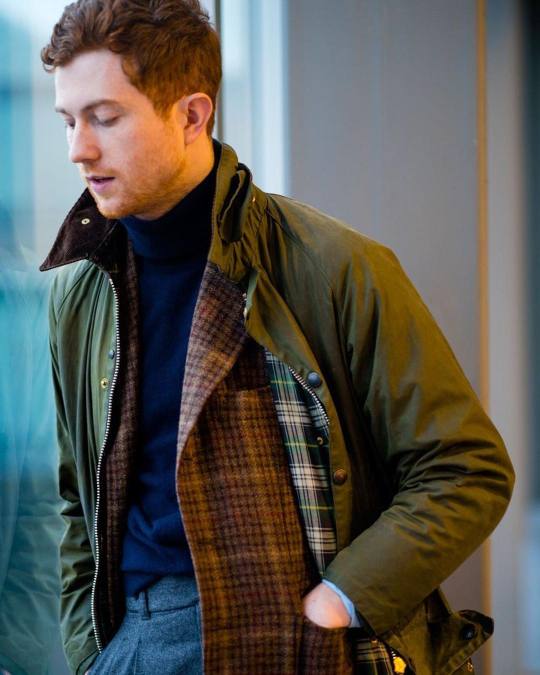
I ask Jake if he has any suggestions for how younger men can get into tailored clothing. He’s thirty now and has twelve years of experience in the clothing trade, but — perhaps unsurprisingly — his advice is somewhat basic. Over the years, I’ve found that stylish people aren’t very exacting in their recommendations (when it comes to how he wears double-breasteds, a style many find intimidating, Jakes shrugs and says he just puts them on). Men who are simply well-dressed are all too happy to dictate things in millimetric proportions: the width of leg openings and size of cuffs. But stylish men often see things as being freeform. If you try to be too exacting, you strangle out style’s more essential characteristics. Still, we came up with a few things, even if they’re often-repeated truisms.
Buy Less, Buy Better
“We’re lucky; this isn’t the 1980s. We’re at a time when most men don’t have to wear a suit every day. So instead of having ten suits in a wardrobe, you can buy a few key pieces that will elevate how you look. That means you can also spend more on each one.”
Updating the Classics
“At Anglo Italian, we don’t do gimmicks. We don’t do Ghurka trousers or super-wide waistbands with multiple buttons. It’s just not our thing. We like the classics, but also feel that you can make them in a way so that they feel natural to you. One way to achieve that is with the cut. We like a high-rise trouser with pleats, but we don’t want them billowing or vintage looking. You don’t have to wear a fashion brand’s interpretation of a slim cut, but you can slim the leg up a little.
Similarly, we like jackets with softness and drape. The Italians call it "bounce,” which means the chest isn’t glued to you; it has a bit of fullness. We also like an extended shoulder, but we want them to be soft and sloping, so they look relaxed. This way, the jacket feels soft and comfortable, but it has shape to it. It also looks natural to you.“
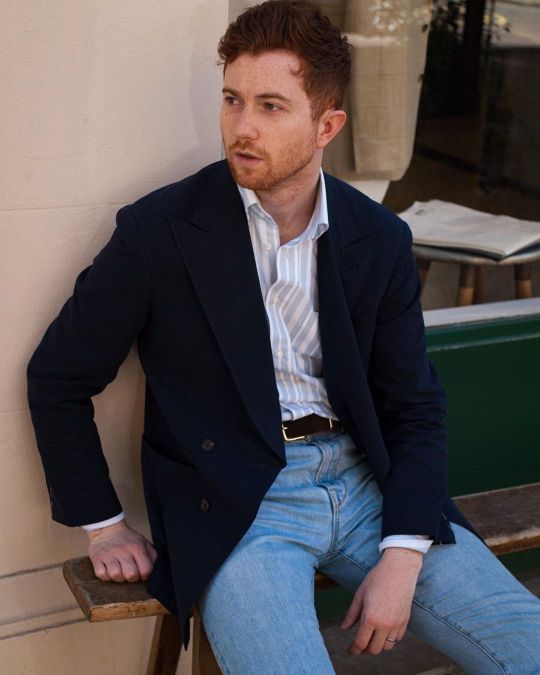
Finding Your Silhouette
"A lot of this is about knowing your proportions. I like a drapey chest, a broader shoulder, a lower buttoning point to get that bigger v-zone. I also like a relatively big lapel that breaks halfway across the chest. I have a shorter torso, so I like a higher rise, but the ideal cut will depend on the person. For years, we couldn’t find jeans that can be worn with sport coats, so we designed our own. We raised the rise and widened the thigh, but kept the taper. It’s about finding what works for you.”
Cold Colors, Matte Textures
“We don’t like ruddy browns or purple-y reds. We like colder colors that are easier to wear — steel blue, cold gray, and neutral olive. Fabrics are always matte and often textured. The secret is in how you combine those things: the cut, design, colors, and textures. That’s how you can update the look.”
Dressing Down
“I feel it’s easy to wear tailored clothing here in London. But I also appreciate that not everyone has that kind of environment. If people aren’t wearing suits in your town, there’s still room for a navy sport coat. You don’t need all the bells and whistles. You don’t have to go to the pub in Belgian loafers and a big windowpane jacket. The nuance is all in the cut and fabrics. A polo shirt or OCBD can soften a look. Wear patch pockets; use a lot of knitwear; throw jeans into a look. Try a polo shirt with jeans, sneakers, and a navy sport coat. There’s a way to do that look well.”
Style is More Than Clothes
“The great thing about tailored clothing is that it serves a social function. People wear tailored clothing to work, parties, and formal events. It allows people to do things, and doing things is really at the heart of style. Sometimes people think of tailoring as the stuff you buy and own, like stamp collecting. But real style is about going out and doing stuff; otherwise, you’re just dressing up. Doesn’t the Duke of Beaufort look better than a fashion model? It’s because he’s doing something in photos, not just staring blankly into a camera. Don’t let your clothes be the end-all, be-all.”
For more of Anglo Italian, you can follow Jake, Alex, and the store on Instagram. Naturally, almost everything they wear is available at Anglo Italian (many are designs that are exclusive to the shop, including the sport coats, jeans, and oxford button-downs). Anglo Italian also maintains a music playlist through Spotify, which they update every month. Their music selection, like their clothes, is quite good.
